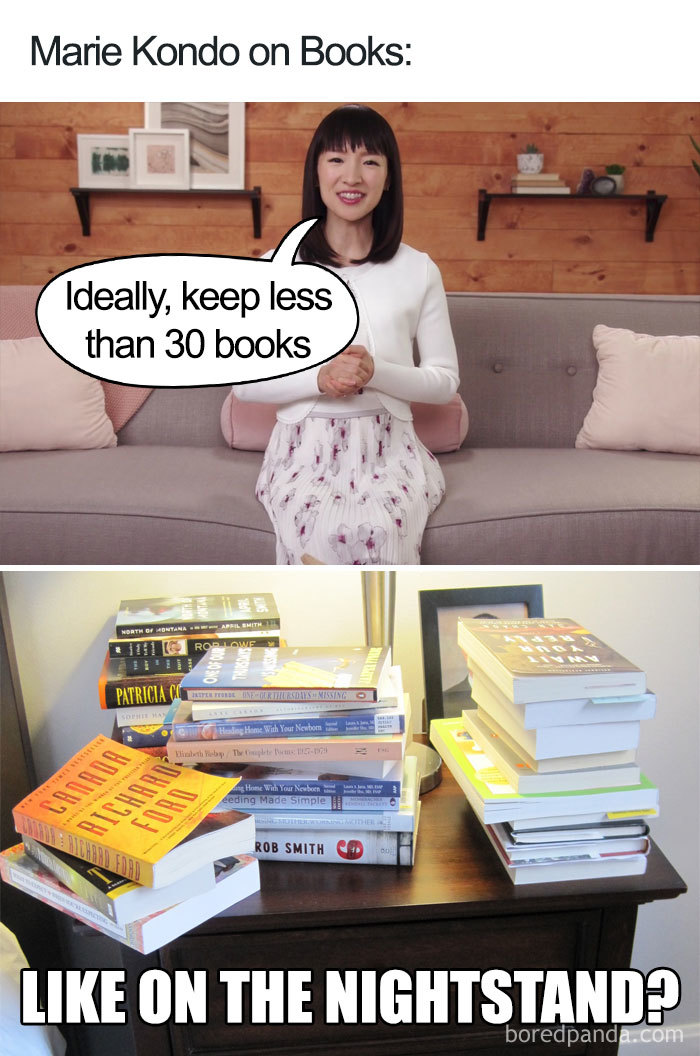TL;DR:
- Giving others choices can be a great tool, but it can also become overwhelming.
- It isn’t enough to just tell students to do something; we need to show them how.
- Using a structured method to guide decision-making can bridge the gap between what students want to do and what they can do.
Menus and Tidying Up
I have a not-so-secret guilty pleasure. I love Gordon Ramsay’s television shows and watch all of them as often as I can. One of his shows, Kitchen Nightmares, recently returned and I streamed it during winter break, in between games, spending time with family and friends, and reading.
One of the things I have noticed on this show is how often Chef Ramsay advocates for restaurants to slim down their menus. It seems that many restaurants, in an effort to cater to every potential diner’s wants, add more and more items to the menu. However, this often results in creating confusion for the servers, the cooks, and the diners themselves. As Gordon visits these restaurants and helps them get back on track, he also helps them see value in preparing a few dishes very well instead of preparing a lot of dishes poorly.
Using this process empowered students to take control of their own belongings and their own learning space. Click To TweetOvercome the Clutter and Mess
When I was in the classroom, each of my fourth graders had their own desk. At the start of the year, their desks were carefully organised with notebooks, pencils, dry-erase markers, erasers, whiteboards, student journals, and independent reading books. By the end of the first week of school, the desks were full of random papers, snack wrappers, empty milk containers, toys, and probably at least one furry animal that had settled in.
Much like the restaurants that Gordon Ramsay was called in to save, my students had too much stuff and didn’t know what to do with it. Unlike Chef Ramsay, though, I didn’t know what to do. I was more like the owners on “Kitchen Nightmares,” completely baffled as to how things had gotten so wrong.
To try to overcome the constant clutter and mess, I would give my students time each Friday afternoon to clean their desks. Inevitably, this would result in students emptying everything from their desks, throwing out the most obvious garbage, and then putting everything back in tidy piles that either stuck out (if the desk had a rigid top and an opening on the side) or kept the top from closing.
Students weren’t cleaning their desks, they were just tidying the mess.
Not too long ago, Marie Kondo caused something of a revolution with her book, “The Life-Changing Magic of Tidying Up.” She shared tips and strategies for decreasing what you have in your home or workspace, getting containers to store things more efficiently, folding clothes in a way that makes them more accessible, and, perhaps most controversial, suggesting that someone would never have a reason to own more than 30 books. This triggered quite the backlash and generated a host of humorous memes!

Image from boredpanda.com
In his book Now We’re Talking: 21 Days to High-Performance Instructional Leadership, Dr. Justin Baeder introduced me to the PEEP principle: a Place for Everything and Everything in its Place. This principle means exactly what it says: When organising your space, whether it is a desk, a closet, a study, or your entire home, you need to have a designated place for everything to go and then be diligent about putting everything in its designated place.
I’ll be the first to admit that I am not the best at living up to this.
The aesthetic of my workspace in my office can most generously be described as “strategic piles.” (A less generous description would be “the cover of the ‘Hot Mess Express’ magazine.”)
However, both Ms. Kondo and Dr. Baeder propose a fairly simple concept: If you don’t want things to be a mess, you need to have a place for things to go and then you have to put things where they belong.
Which brings us back to my students and their cluttered desks. Each Friday afternoon they would attempt to clean their desks and each Monday morning their desks were once again filled with items that did not belong. This was a growing source of concern for me, for their parents, and for the students themselves.
And then one day I had an epiphany.
Just as those restaurant owners on “Kitchen Nightmares” didn’t know what to do with their overly complicated menus, my students didn’t know what to do with all of the stuff in their desks. Even if they had an idea of what belonged and didn’t, they also lacked a clear understanding of the process. They knew that obvious garbage (candy wrappers, milk containers, juice boxes, etc.) didn’t belong but they didn’t have any guidance on what to do with everything else. And so I tried something new. (After all, we are often reminded that the definition of insanity is doing the same thing over and over and expecting a different result!)
[scroll down to keep reading]
The Two Piles Strategy
I created a series of visuals for my students when they needed to clean their desks. While there were tweaks to the process over time, this was the general overview:
1. Remove everything from your desk.
2. Create two piles: Garbage and not garbage.
Put the trash in the trash can (or recycling for papers).
3. Create two piles: Home and not home.
Take everything that belongs at home and put it in your backpack and then actually take it home, not shove it in your locker to be found at the end of the year.
4. Create two piles: Mine (meaning the student’s) and not mine (meaning not the student’s).
Take everything that does not belong to you and return it to whomever it belongs to. [NOTE: This usually consisted of items that students had borrowed from me, another student, or sometimes another teacher. This also included overdue library books that were finally located.]
5. Create two piles: Papers and not papers.
Put all papers in the appropriate folder or binder. (Unless it is an assignment, in which case, please turn it in.)
6. Books and not books.
Place all of the books in an organised stack in your desk. [NOTE: This is the first time anything has actually been returned to the desk.)
7. Create two piles: Folders/binders and not folders/binders.
Place all of the folders and binders in an organised stack in your desk.
8. Create two piles: School supplies (pencils, markers, scissors, etc.) and not school supplies.
[NOTE: At this point, there should be very few items left in the “not XYZ” pile.] Put all of your school supplies in a storage container or return them to the community supply in the classroom.
9. If there is anything left that has not been sorted, please review this list.
If you are still not sure what to do with it, consult with the teacher. [NOTE: Some students had fidgets or other such items and I suggested that they were considered school supplies. Toys, on the other hand, needed to go into backpacks.]
Using this process empowered students to take control of their own belongings and their own learning space. It resulted in less “cleaning” that was simply shoving things back into a desk and more putting things away and reducing clutter.
The “Two Piles” strategy can be used at home, too!
As we exit the holiday season that stretches from October through January, my wife and I use this strategy and we clean up and prepare for spring. Taking it one room at a time, we sort things into two piles, finding a place for things that belong and moving the things that do not belong to another room. We don’t try to clean the entire house at once, though. We start with one room and, even if it takes a few days or weeks, we don’t start on another room until we are finished with the one we are in.
When you need to help your students (and maybe yourself), consider introducing the Two Piles strategy, adapting it as needed, and then let me know how it worked out!
About Alex T. Valencic
Alex Valencic is an educator, former small business owner, Boy Scout, volunteer drug prevention specialist, unrepentant bibliophile, and a geek of all things. He worked as a substitute teacher for three years before achieving his lifelong dream of teaching fourth grade, which he did for seven years in Urbana, Illinois, before accepting his current position as the Curriculum Coordinator for 21st Century Teaching and Learning in Freeport, Illinois, where he not only supports innovative educational practices in the classroom but also oversees social studies, science, and nearly all of the elective courses in the district.




